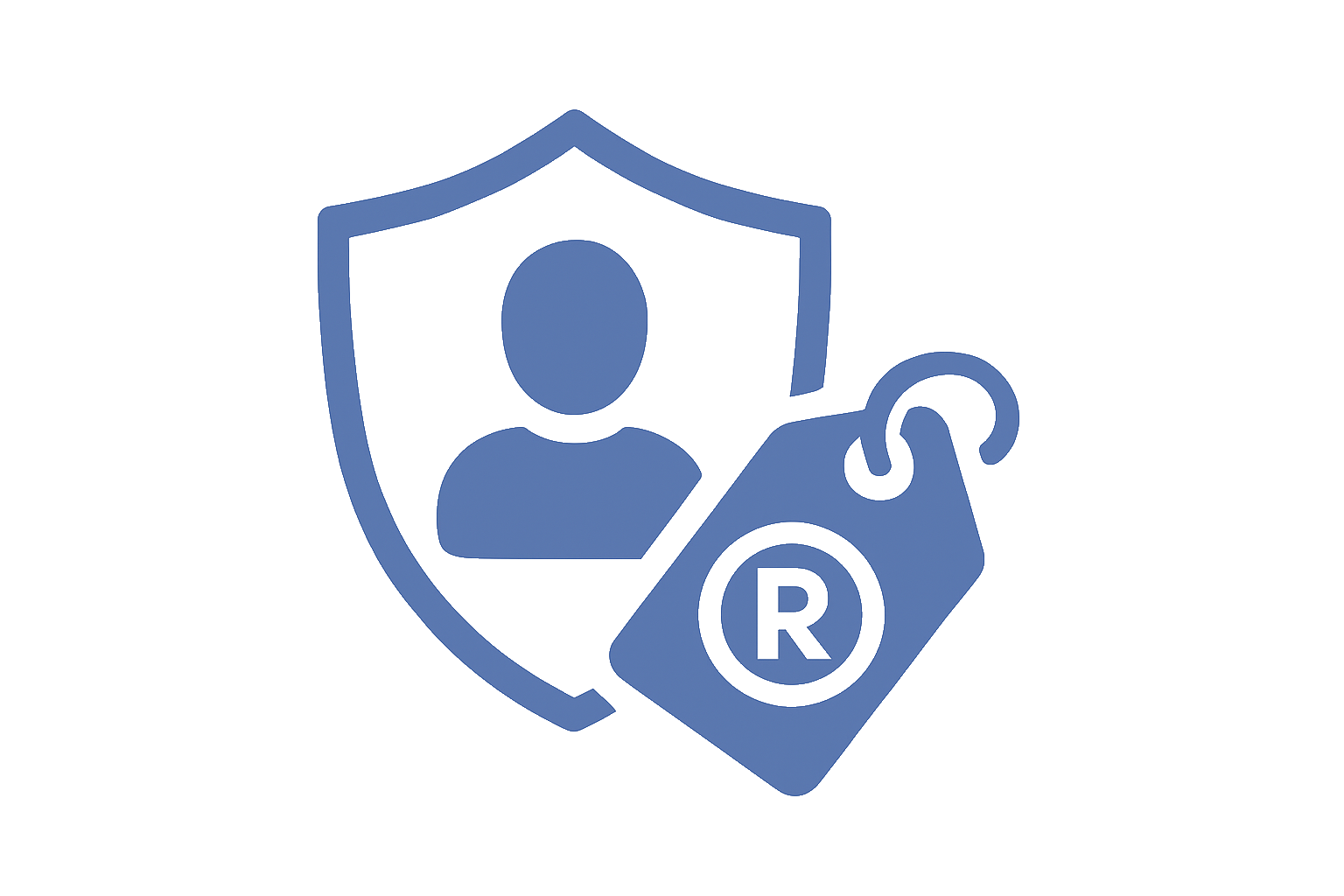📌 Quick Summary
1-Sentence Answer:
Your brand deserves more than a doodle and a dream—learn how ™ gives you basic rights while ® gives you legal superpowers.
The Article Overview:
This article breaks down the real meaning of ™ and ® symbols, showing how and when to use each to protect your brand name or logo. You'll learn how to register trademarks, what rights you gain, and why skipping registration is like wearing a seatbelt made of spaghetti.
❓ Common Questions & Answers
Q1: What’s the difference between ™ and ®?
™ means you’re using a mark but haven’t registered it. ® means your mark is federally registered with the USPTO.
Q2: Do I need to apply to use ™?
Nope. You can slap ™ on your brand as soon as you use it publicly. It gives you limited “common law” rights.
Q3: Why bother with registration then?
Because ® brings the big guns—federal protection, exclusive rights, and stronger enforcement if someone copies you.
Q4: Can I use ® if I’m still waiting for approval?
Not legally. Using ® before your mark is officially registered can get you fined. Patience, grasshopper.
Q5: Do international businesses follow the same rules?
Mostly, but not always. Each country has its own system—some make you register nationally, others regionally (like the EU).

🪜 Step-by-Step Guide
Step 1: Start using your mark
Design your logo, slogan, or product name and start using it. You can add ™ immediately to claim basic ownership.
Step 2: Conduct a trademark search
Check USPTO.gov to make sure your genius idea isn’t already taken. Avoid legal facepalms.
Step 3: File with the USPTO
Submit a trademark application online. It’s cheaper than a lawsuit and faster than explaining “common law rights” in court.
Step 4: Wait for examination
A USPTO examiner reviews your application. They may issue “office actions” (a fancy term for nitpicking).
Step 5: Celebrate registration
Once approved, you can use ® proudly—and sleep better knowing you’ve officially locked in your brand.
📖 Historical Context
Trademark protection has existed since ancient Roman artisans carved personal symbols into goods to prove authenticity. Fast forward to the Industrial Revolution—mass production led to rampant brand confusion, birthing the first modern trademark laws in the 1800s.
In 1870, the U.S. passed its first federal trademark statute. It got struck down (oops), but Congress tried again with the 1881 and 1905 Acts. The real breakthrough came in 1946 with the Lanham Act, which created today’s U.S. trademark registration system and the ™/® distinction.
Today, trademarks are global business assets. Whether you’re selling cookies or coding apps, your logo and name are as valuable as your products. Just ask Coca-Cola—or anyone who’s ever tried to trademark the word “apple.”
🏢 Business Competition Examples
-
Nike vs. “Just Saying” Copycats – Nike’s registered slogan “Just Do It” gave it the right to stop knockoff motivational shirts.
-
Apple vs. Apfelkind (Germany) – Apple’s global registrations helped it fend off a small German café using a similar logo.
-
Burger King (Australia) – Couldn’t use its name because a local shop already had “Burger King” registered. It became “Hungry Jack’s” instead.
-
McDonald’s vs. Supermac’s – McDonald’s lost “Big Mac” rights in the EU for lack of use, proving even giants need to maintain registrations.

💬 Discussion Section
A trademark is more than a legal symbol—it’s your brand’s identity card in the marketplace. While ™ gives you a head start, it’s like holding a gym membership card without actually working out. You can claim the rights, but enforcing them takes more effort and offers less reward.
Federal registration via ® is the true muscle. It grants you nationwide protection, public notice, and access to federal court. It also discourages copycats since your mark shows up in the USPTO database—like a “Do Not Disturb” sign for brand thieves.
For small businesses, trademark registration might seem pricey ($250–$750 per class), but losing your brand identity costs much more. The ® symbol is your inexpensive insurance policy against confusion, infringement, and expensive rebranding.
Internationally, systems like the Madrid Protocol let you expand your trademark protection across multiple countries with one filing. Smart entrepreneurs treat registration as part of their global expansion checklist.
⚖️ The Debate
Side A – “™ Is Enough”
Advocates say small businesses can rely on ™ until they gain traction. It’s free, instant, and proves intent to own a mark. Common law protection covers your local area.
Side B – “® Is Essential”
Others argue federal registration is non-negotiable. It gives nationwide coverage, stronger damages, and the prestige of official recognition. It’s also easier to defend if your brand goes viral.
✅ Key Takeaways
-
™ = unregistered, basic protection; ® = federally registered, full protection.
-
You can use ™ immediately but ® only after registration approval.
-
Registration gives you stronger rights and federal court access.
-
Trademarks prevent confusion and protect your business identity.
-
Always maintain and renew your registration to keep rights active.
⚠️ Potential Business Hazards
-
Accidental infringement – Using an existing mark could trigger legal action.
-
Premature ® use – Fines or rejections from USPTO.
-
Neglecting renewals – Lapsed registration means lost rights.
-
Inconsistent branding – Weakens legal arguments and confuses consumers.

❌ Myths & Misconceptions
Myth 1: “™ and ® mean the same thing.”
They don’t. ™ is free use; ® requires USPTO registration and offers stronger protection.
Myth 2: “You need a lawyer to file.”
Nope. You can file online yourself—though an attorney helps avoid rookie mistakes.
Myth 3: “Once I register, I’m protected forever.”
Wrong. You must renew every 10 years or your registration expires.
Myth 4: “Small businesses don’t need trademarks.”
Even local cafés benefit. Protection scales with growth—you never know when your latte art goes viral.
📚 Book & Podcast Recommendations
-
Building a StoryBrand by Donald Miller – https://www.amazon.com/dp/0718033329
-
Trademark: Legal Care for Your Business & Product Name by Nolo – https://www.nolo.com
-
How I Built This podcast – https://www.npr.org/sections/how-i-built-this
-
The Brand Gap by Marty Neumeier – https://www.martyneumeier.com
⚖️ Legal Cases
-
Two Pesos, Inc. v. Taco Cabana, Inc. (1992) – https://supreme.justia.com/cases/federal/us/505/763/
Held that trade dress can be inherently distinctive without secondary meaning. -
Qualitex Co. v. Jacobson Products (1995) – https://supreme.justia.com/cases/federal/us/514/159/
Confirmed colors can be trademarked. -
Matal v. Tam (2017) – https://supreme.justia.com/cases/federal/us/582/15-1293/
Struck down the ban on “disparaging” trademarks, expanding free speech rights.
📣 Expert Invitation
Want professional help registering your trademark or patent? Visit Inventive Unicorn and get real legal guidance from IP pros who don’t bill by the minute.

🔚 Wrap-Up Conclusion
The ™ mark is your handshake; the ® mark is your contract. Start with ™, but don’t stop there—register your mark, protect your identity, and show the world you mean business. Your brand deserves the ® treatment.











